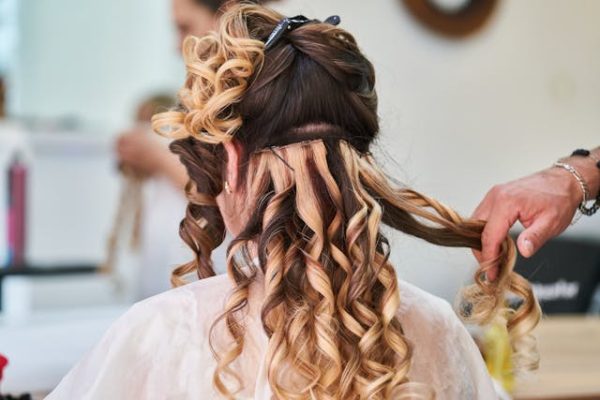Finding the perfect length for straight hair extensions can dramatically change the way natural hair looks, creating a smoother and more seamless appearance. The best approach is to consider your existing hair length, personal style goals, and the type of extensions, whether looking for no-clip straight hair extensions or more permanent options. Since straight extensions fall without curls or waves, it’s important to choose a length that blends with your own hair for the most natural transition.
Many people underestimate how the finish of straight hair impacts the overall effect; unlike waves, straight strands show their true length and require careful matching for a flawless look. Browsing a wide selection of straight hair extensions can help anyone decide what will blend best with their natural hair and achieve their desired level of length and volume.
Key Takeaways
- Choosing extension length depends on natural hair and style.
- Straight extensions need accurate length selection for best blend.
- The type of extension can affect the final look.
How To Select the Ideal Length for Straight Hair Extensions
Finding the right length for straight hair extensions involves measuring accurately, consulting reliable hair extension length charts, and choosing a length that aligns with your preferred style. Selecting the best option helps ensure a seamless, natural appearance and an overall satisfying result.
Measuring Your Natural Hair for Extensions
Accurately measuring natural hair length is the foundation for choosing the correct hair extension length. Using a soft tape measure, individuals should measure from the roots to the ends of their hair, typically starting from the midpoint at the back of the head. It’s helpful to take note of where the natural hair ends in relation to the body, such as the shoulders, collarbone, or chest. Straight hair falls naturally, so measuring should be done while hair is straight and dry, without any added volume. For the best results, someone else can help measure to avoid errors or bending.
The new length desired should be visualized before selecting hair extensions. Many opt to increase length by no more than 4-6 inches beyond their current hair, which helps create a seamless blend between the natural hair and extensions.
Matching Extension Length to Your Desired Hairstyle
The ideal hair extension length should support the intended hairstyle while blending well with natural hair. If the plan is to trim or layer extensions, consider choosing one or two inches longer to allow for custom cuts without losing the target length. Longer straight extensions suit those wanting a dramatic change or styles that fall past the chest or mid-back. For a more everyday look, extensions just 2-4 inches longer than natural hair provide subtle volume and length while ensuring a natural blend.
It’s important to factor in body proportions. Petite individuals may find that longer extensions appear even longer, while taller people may need to choose extra length for similar results. Always visualize the finished look and consult with a stylist if uncertain.
Key Factors Influencing Straight Hair Extension Length Choice
Selecting the right straight hair extension length requires attention to hair texture, how well the extensions will blend with existing hair, and how physical traits like head size or height affect perceived length. Each of these areas shapes the final look and comfort of hair extensions.
Blending Extensions With Short or Long Hairstyles
It’s important to match the extension length with the existing hairstyle for seamless blending. For a blunt bob hairstyle, extensions that are no more than 2-4 inches longer than the natural cut help avoid obvious lines. Short styles benefit most from shorter lengths and more layers.
Long hair extensions work best for those whose natural hair reaches at least the shoulders. When adding significant length, gradual layering helps integrate the extensions without harsh transitions. Extensions that are too long compared to the wearer’s natural hair can appear unnatural and heavy at the roots. When pairing with lace frontals or multiple bundles, keeping the blend consistent in density and length is key. This ensures the finished style does not look uneven or artificial.
Impact of Head Size and Height on Length Appearance
Height and head size can greatly change how long extensions look. For example, a 20-inch extension may fall to mid-back on someone of average height but look shorter on those who are tall. Conversely, the same length can appear much longer on a petite person. A larger head size can also reduce the perceived length, as the extension must cover more surface area. It’s useful to measure from where the extension will sit—often the middle of the ear—to gauge where the hair will fall.
Tall individuals may consider choosing extensions 2 inches longer than what the length chart suggests. Those with a smaller frame or head may opt for shorter extensions to avoid an overwhelming effect. Accurate measurement before purchase leads to a more natural and balanced result.
Conclusion
Choosing the right length for straight hair extensions depends on several factors, including natural hair length, face shape, and desired style. Ensuring the extensions blend well with natural hair helps achieve a seamless and flattering look.
Key considerations include the individual’s height, the intended hairstyle, and maintenance preferences. A straightforward approach—matching extension length with personal style and lifestyle—ensures a result that looks natural and feels comfortable.


